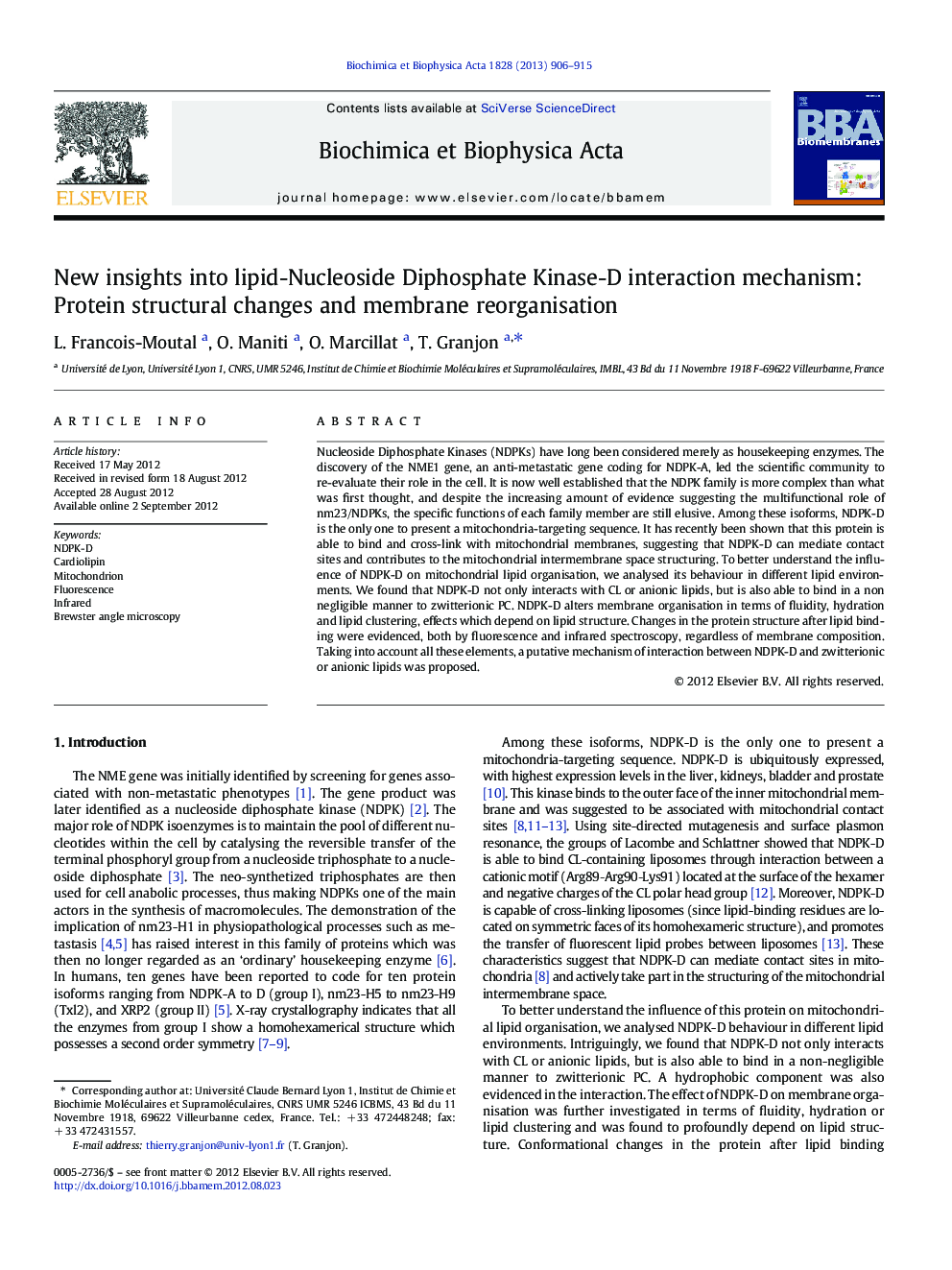| کد مقاله | کد نشریه | سال انتشار | مقاله انگلیسی | نسخه تمام متن |
|---|---|---|---|---|
| 1944429 | 1053210 | 2013 | 10 صفحه PDF | دانلود رایگان |

Nucleoside Diphosphate Kinases (NDPKs) have long been considered merely as housekeeping enzymes. The discovery of the NME1 gene, an anti-metastatic gene coding for NDPK-A, led the scientific community to re-evaluate their role in the cell. It is now well established that the NDPK family is more complex than what was first thought, and despite the increasing amount of evidence suggesting the multifunctional role of nm23/NDPKs, the specific functions of each family member are still elusive. Among these isoforms, NDPK-D is the only one to present a mitochondria-targeting sequence. It has recently been shown that this protein is able to bind and cross-link with mitochondrial membranes, suggesting that NDPK-D can mediate contact sites and contributes to the mitochondrial intermembrane space structuring. To better understand the influence of NDPK-D on mitochondrial lipid organisation, we analysed its behaviour in different lipid environments. We found that NDPK-D not only interacts with CL or anionic lipids, but is also able to bind in a non negligible manner to zwitterionic PC. NDPK-D alters membrane organisation in terms of fluidity, hydration and lipid clustering, effects which depend on lipid structure. Changes in the protein structure after lipid binding were evidenced, both by fluorescence and infrared spectroscopy, regardless of membrane composition. Taking into account all these elements, a putative mechanism of interaction between NDPK-D and zwitterionic or anionic lipids was proposed.
Figure optionsDownload high-quality image (174 K)Download as PowerPoint slideHighlights
► NDPKD binds not only to CL or anionic lipids, but also to zwitterionic PC membranes.
► NDPKD decreases phosphate and ester moiety hydration whatever the lipid head group.
► NDPKD increases anionic acyl chain hydration and induces lipid clustering.
► Changes in NDPKD structure after lipid binding were evidenced.
Journal: Biochimica et Biophysica Acta (BBA) - Biomembranes - Volume 1828, Issue 2, February 2013, Pages 906–915